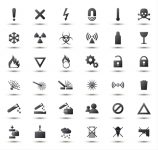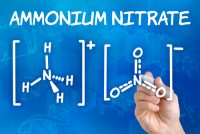Category: Chemicals
Today’s workplace uses thousands of chemicals, many of which are hazardous. The resources in this section will help guide you in the safe and legal identification, storage, transport, and use of these chemicals, and in making sure that your employees right to know how to be safe around such substances is provided, as required by law.
When we think of chemical labeling, we tend to think of “ordinary” situations—gallon jars of sulfuric acid sporting OSHA’s new pictograms, or bags of insulation with their hazard labels prominently displayed. But hazardous chemicals don’t always come in what we think of as “ordinary” containers, nor do they stay there—they are, after all, intended for […]
Yesterday we looked at the hazards of methylene chloride, a common paint-stripping chemical with many industrial uses—and many hazards, including cancer. Today, let’s talk about how to protect workers from exposure to this narcotic, corrosive, carcinogenic chemical.
Methylene chloride (also called dichloromethane) is a solvent with many uses, including paint stripping, polyurethane foam manufacturing, and cleaning and degreasing. You might not think that a chemical you can buy at your local home improvement store for use at home would be all that dangerous, but don’t be fooled. Methylene chloride is hazardous enough […]
Chemical accidents involving ammonium nitrate are rare, but have the potential for significant property destruction, injury and death. Although the Environmental Protection Agency (EPA), Occupational Safety and Health Administration (OSHA), and Department of Homeland Security (DHS) all have regulations in place, they apparently are not adequate to prevent accidents or ensure emergency response is prepared. […]
Yesterday, we looked at the six essential elements of a HAZWOPER site analysis. Today, we’ll look at the requirements for site management and site control.
What we know about ammonium nitrate is that it is commonly used both for fertilizer in agriculture and for explosives in mining and other industries, and that significant quantities of the chemical are stored throughout the country. What we do not know is exactly how much ammonium nitrate is in storage and where this storage […]
If you’re in charge of a HAZWOPER site, there are site-related duties and responsibilities you need to be aware of. These include site characterization and analysis, establishing a chain of command, and site control.
Safer Substitutes for Flame Retardants Flame- retardant chemicals have long been incorporated into different products like furniture, carpets, electronics, appliances, and building products to meet state and federal flammability requirements designed to decrease ignitability and inhibit combustion. Unfortunately, monitoring and testing studies found that certain flame- retardant chemicals exhibit undesirable characteristics such as being persistent […]
New Insect Repellent Graphic Will Aid Consumers Using insect repellents to protect against the increasing threat of insect-borne diseases may become as common as using sunscreen to protect against skin cancer. At least that is the hope of the EPA and Centers for Disease Control and Prevention (CDC) in their joint effort to encourage the […]
CDC and EPA Combine Forces Against Insect-Borne Diseases In the United States, mosquito bites used to be more annoying than anything else, requiring old-fashioned remedies and maybe a bandage to ward off infection. That all changed in 1999, when the CDC revealed that mosquito-borne West Nile virus was detected in the United States, a disease […]










